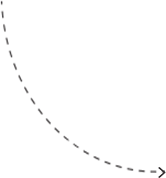Whether you’re a smart Fintech start-up, or an established business – your website is the strongest tool in your marketing toolkit. For 92% of your potential customers, it’s the first interaction they will have with your brand. It’s therefore the first and most important opportunity to present your brand to the world – who you are, what your values are and what customer needs you meet.
As your business moves through the different stages of its lifecycle and your focus shifts from establishing a customer base to maintaining, expanding or upselling– so too should your website change to align to these goals.
The lifecycle is often reflected in the development of a business’s digital channels and tends to follow the AIDA model. Starting with a focus on raising awareness of your offer and educating on your product/service’s benefits, your site will likely need to transition to deliver leads, conversions and ultimately service/personalisation as your business matures.
The transformation of your site can be an expensive undertaking. Often it’s worth the investment, however not every site needs a total overhaul in order to deliver an optimised customer experience that delivers a commercial outcome.
This post will be focused on how an existing, well designed, customer-education focused website can be optimised – without needing to start from scratch – to drive conversions through the site.
Let your customers lead you
Focus first on your customers (target or existing) – who they are, what are their needs, and how do they buy the type of financial products and services your brand is offering. Then align your website to these needs and goals.
Your website’s main goal is to provide a clear position on what it is customers can do or learn on your site, why it’s important to them, and why you are the best for them. At this stage, you’re building trust and relationships.
As you transition past the start-up phase to focus on growth, your website should reflect these goals. The website still needs to provide that education for potential customers, but also start to drive conversions and up-sells across the site for the customers who are already familiar with your brand, products, and services.
From education to conversion
Small but effective changes to your existing site can help you achieve both goals – education and conversion – driving different user journeys through the site, based on the customer’s goals.
Start with a plan
If you don’t know where you want to go, how will you know when you get there (or how to get there)? A plan provides you with a starting point, a target, and a benchmark to track against – you may need to review and refine the target, or your plan, to achieve this target, but you need to start with a plan.
For example, you may establish your benchmarks by identifying an average of your past 3-6 months’ activity for a range of key metrics and set a goal 20-30% above these averages. Key metrics you may want to include are:
- Number of visitors
- Number of page views
- Bounce and exit rates
- Time on site
- Conversion rates on any existing forms (such as newsletter sign-up)
- Common user paths through your site’s pages.
Once you better understand your visitor behaviour, identify what you consider to be a “conversion”, the customer details you want to capture to allow you to start engaging them.
What is a conversion?
Conversions can take many forms and unfortunately most businesses either don’t have a handle on what they consider a conversion, or are purely focused on sales.
Core business metrics for a start-up may be as simple as capturing an email address for an expression of interest in your new product. For more established businesses, it’s more likely to include sales leads or on site transactions.
However, there are many other conversion points that you can apply to an existing site, for example:
- Content views (e.g. video content)
- Content downloads
- Return visits
- Interactions with tools and calculators (and the sharing of results)
- The addition of affiliate pages, for products sold through external distribution channels
Tailor to your customer
Identify your customer segments, what they need when they come to your website, and what you (ideally) want them to do. Map out existing content that meets these needs, future content to be created and identify where you can cross promote products or services within this content.
Borrowing from the web development world, you can apply the “IFTTT” methodology – If This Then That. For example: If a user is looking at Product “X” page, then we display a connected product or service, or invite them to sign-up to receive updates etc.
Add new conversion focused pages
Landing pages are one of the key tools we can use online to drive conversions. They are standalone pages built within your site with very specific content and one specific goal, usually conversion or getting visitors to take a particular action on the page. These are more effective at guiding visitors through the sales funnel than, for example, product pages because they are very targeted in content and next action. When site visitors are given very targeted content which speaks to their needs or goals, they are more likely to take the next step – such as filling in a form, or clicking through to the point of sale.
Refine text-heavy pages
Review the text content throughout your site and refine it down to the minimum amount of words needed to covey the most important information. The challenge is to provide visitors all the information they want and need – benefits and key features, ways you help them achieve their goals and why this product or service better than others – in a very short period of time.
Focus on:
- The details of your product or service
- How it meets customers’ goals or needs
- Why it’s better that the rest
- How customers access the product or service
- The next steps – capture their details, send them to the point of sale
Content – free and gated
Content is still king. Creating content that is useful and interesting to your target audience segments provides you with the opportunity to show you are the experts, and you know what is important to them.
Make it a mix of free and gated content. Free content would be blogs and videos – which are informative and interesting. Gated content – requiring visitors to provide information about themselves to gain access – includes eBooks, How-To guides and checklists. Gated content should share your knowledge and expertise and provide useful tools and information.
Make sure you include social sharing functionality on all of your content pages.
Create and test calls-to-action
CTA elements need to be clearly marked and differentiate themselves – with clever colour and design – from the rest of your site, without being obnoxious or annoying. Don’t go near anything that flashes, multiple non-user triggered pop-ups, or navigates users away from the site (even if it’s opening in a new tab).
Well-designed CTAs can actually enable users to navigate their way to the content, products, or services they’re interested in. The headlines, images, colours, button text, and ease of use are all important.
Test and compare different combinations of words and colours to see what has the most impact on your users. This can be more sophisticated A/B testing, or as simple as running one headline, body and button text for a week, capturing the performance and comparing against a different version.
ALWAYS test and refine
Track your site’s performance against the goals in your plan – are you seeing increased traffic, longer time spent on the site, more page views and more form submissions? Are people engaging with your free and gated content, are they clicking on your CTAs? If you are seeing drops in any of these areas, or your content is not achieving the desired targets, continue to review, refine, and test.
Get started!
You don’t need to start from scratch to increase conversions on your website, you just need to start. Where? First, get a plan – know where you are now, where you want to be, and how you’re going to get there. Next, review your target market’s needs and your existing customer behaviours – map these out and identify where you have gaps in meeting these needs online. Then, start building the content, tools, and functions to meet these needs and goals – and capture the data or conversions you need. Finally, make sure you measure – review analytics, customer feedback, and monitor how you are tracking to your goal. Always: Review, redesign, refine, remove, and improve.







